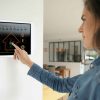Protocoles: la grande inflation / The great inflation of protocols
Alors que, il y a peu d’années, nous pensions encore que le nombre de protocoles allait considérablement se réduire pour laisser place à quelques standards, nous assistons, ces derniers mois, à une véritable inflation avec notamment l’arrivée de Thread, Sigfox ou LoRa à grand renfort de communication…
Confusion pour marché Smart Building
Si l’émergence de ces nouveaux protocoles se justifie, chacun revendiquant le marché prometteur de l’IoT avec un positionnement plus “bâtiment” pour Thread et plus “territoire” pour Sigfox ou LoRa , le marché fait désormais face à une grande confusion… qui risque de freiner le démarrage encore laborieux des marchés du Smart Home et du Smart Building.
Période transitoire
Que répondre effectivement à un fabricant ou un promoteur souhaitant une solution communicante pérenne (future proof) ? Attendre au risque de passer à côté du marché ou foncer au risque de se positionner à côté du marché… à n’en pas douter, nous assistons à une période transitoire où les solutions d’hier côtoient celles de demain tandis que des tendances se dessinent.
Besoins global
En partant du besoin des usagers, les attentes du marché sont désormais nettement affichées : flexibilité, modularité, pérennité, durabilité, sécurité, interopérabilité et intuitivité. Le tout à un coût global inchangé. Nous rentrons dans l’ère du “bâtiment connecté” multi usages et résolument évolutif. Technologiquement parlant, se développent des solutions ouvertes s’appuyant sur des standards interopérables et sécurisés permettant une convergence IP, native ou par webservices. Là aussi, à un coût global inchangé.
Simplification sans fil
Dans de nombreux cas, le sans fil devient, de fait, un prérequis, pour répondre aux impératifs de flexibilité et de modularité, tandis que le sans pile devient de plus en plus incontournable en répondant, à la fois, aux impératifs de durabilité et de coût global maîtrisé. La simplification est donc en marche ; nous en sommes tous conscients. Ce n’est qu’une question de temps. Mais attention ! à l’ère du “bâtiment connecté”, les cycles ne sont plus de 20 ans mais 20 mois maximum !
English
A few years ago, we still thought that the number of protocols will significantly be reduced, paving the way to some established standards. However, during recent months there was a true inflation of new protocols including Thread, SigFox or LoRa.
Confusion for the Smart Building market
These new protocols are all positioned in the field of the Internet of Things, addressing different focus areas such as “buildings” like Thread or “outdoor applications” like SigFox or LoRa. This causes confusion, which could also slow down the Smart Home and Smart Building market.
A period of change
Who will be the one to provide an effective solution to someone who is requesting a future-proof communication system? In this period of change, yesterday’s solutions exist side by side with the future ones while new trends emerge.
Global demand
The market demands: flexibility, modularity, future-proof solutions, sustainability, security, interoperability and intuitive operation. This is the area of multi-purpose, connected buildings. At the technological side, this means the development of open solutions based on interoperable standards and connected to IP.
Wireless simplicity
In many cases, wireless solutions become mandatory to meet the needs of flexibility and modularity, while battery-less operation is essential for future-proof and cost-efficient solutions. Simplification is proceeding; it’s only a matter of time. However, please note that development cycles in the area of connected buildings are no longer 20 years but 20 months.




